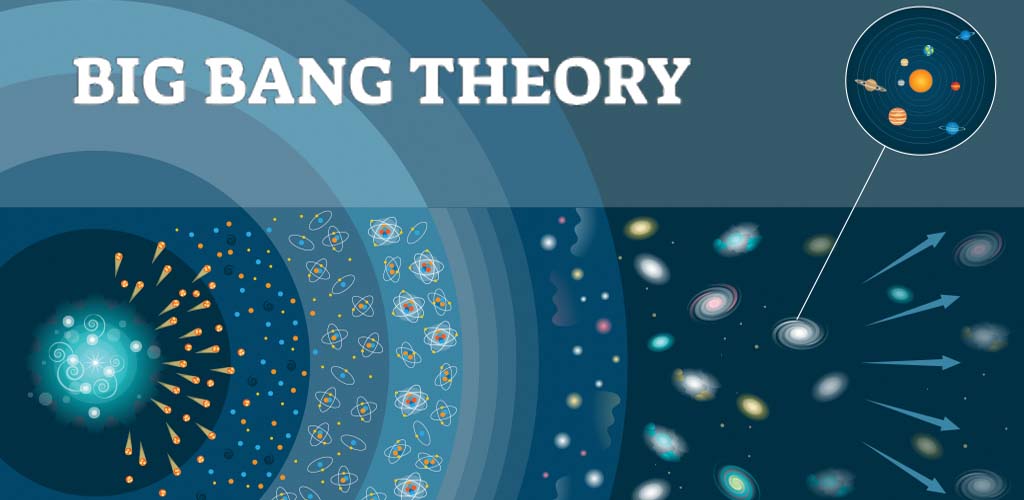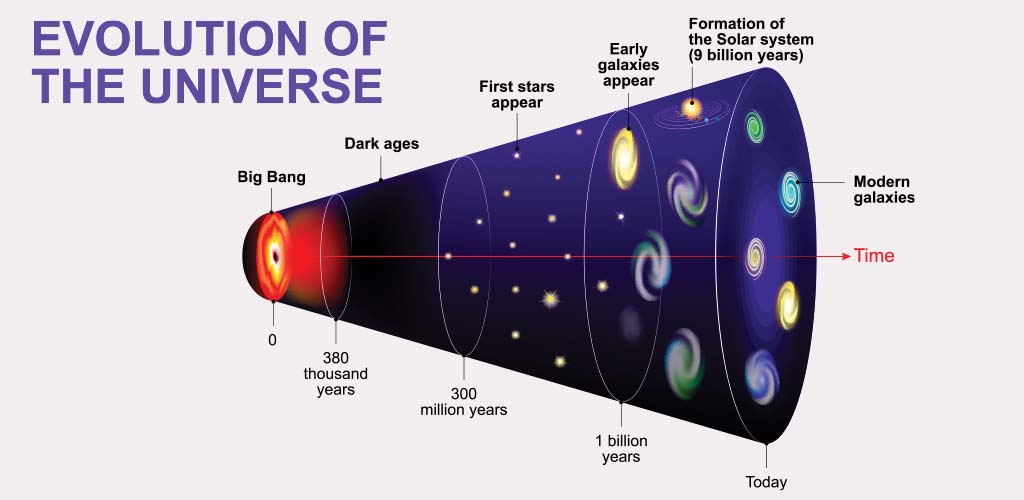What comes to mind when you listen to “The Big Bang Theory?” If it’s the TV series of 2007 aired on CBS, you need to know further about it. Big bang theory is the leading explanation for how the Universe began. The pioneer of this theory was Stephen Hawking, an English theoretical physicist. To delve deeper into Big Bang Theory, we need to know what we call it in a nutshell. You must understand that metals expand when heated. So, take our Universe as a hot metal that started expanding with time. First, it grew at unimaginable speeds and then at a more measurable rate. It has been expanding for 13.8 billion years and creating the cosmos we know today.
Though due to a lack of technological progress, astronomers can not peer back at the Universe’s birth. They can see the “echo” of the expansion through the cosmic microwave background.
The Birth of the Universe

People worldwide still wonder, “How was the earth formed?” So, let me take you 13.7 billion years ago. Yes, I know that’s a long journey. Imagine yourself standing in the middle of the cosmos where everything was condensed in an infinitesimally small singularity, a point of infinite denseness and heat. Do you feel the calm before the storm? It is because everything will explode, and the expansion is about to begin. So, this expansion made our Universe go outwards faster than the speed of light. 13.7 billion years ago, this cosmic inflation lasted for mere fractions of seconds. This is what we call the Big Bang today.
Top 10 Facts about Big Bang Theory

Big Bang Theory by Stephen Hawking gained popularity and acknowledgement from different branches of science. But, it has faced so many rejections as well. So, this theory had travelled a long way even before Hawking mentioned this. Even today, after the completion of 34 years of “A Brief History of Time” by Stephen Hawking, the theory is facing multiple challenges. For your information, this book has been on the international bestseller list for four years, breaking all history. Still, Big Bang Theory is considered one of the most-challenged theories. Let us know about the theory with some fun facts.
Einstein Dismissed the Theory
Georges Lamaitre found out in 1927 that the Universe’s spacetime fabric could be extensive and expanding. He also proposed that the origin was from a smaller, denser, and more uniform state in the past. Einstein, who took Newton’s gravitational theory further with a clear insight into the orbital motion of Mercury, rejected this theory outright. He said that the calculations were correct, but the physics was terrible!
No One Took The Idea Seriously
The theory of the Big Bang is similar to that child in all the ghost movies who sees the ghost first, but no one believes him when he says it. Before Hawking, numerous scientists proposed the same theory, but their contemporaries discarded their ideas. Not Lemaitre in 1927, Einstein also dismissed Soviet Physicist Alexandr Friedmann’s idea in 1922. The physicists needed more time to admit that the Universe was denser, smaller, and more uniform in the past. Lamaitre explained the big bang theory more by connecting it to the redshift of the galaxies. He added what we know as the primaeval atom or cosmic egg for decades is actually that ‘moment of creation.’
The Theory Rose, Finally
Everything under the sun has risen someday to show its true potential. No exception has occurred to the Big Bang theory as well; the theory finally spread its wings to its fullest in 1940. George Gamow, an American scientist, considered Lemaitre’s ideas. He realised that if the Universe was continuously expanding, the wavelength of the light in it was increasing over time. Therefore, the Universe was cooling. If it’s getting cooler with time, it was hot in the past. He concluded that the Universe was hot enough to form atomic nuclei. The Universe must have formed the light elements and then neutral atoms for the first time, resulting in a ‘primaeval fireball.’
Fred Hoyle Entitled the Theory
A child is always grateful to the person who gives him the name. The Big Bang Theory is, therefore, thankful to Fred Hoyle. He was the most fervent detractor of theory. In 1949, he coined the term while giving an interview with the BBC.
Big Bang Afterglow or Bird Poop
A uniform radio signal coming from everywhere in the sky at once was discovered by two scientists, Bob Wilson and Arno Penzias. In 1964, they worked at the Holmdel Horn Antenna at Bell Labs when they found Big Bang’s leftover glow. As we do not see the Big Bang glow every day, it was hard for them to believe despite being people of science. They mistook the ‘noise’ for the pigeon’s noise living beside the antenna. They cleaned the pigeons’ nests out of there, but the signal remained. *Poor pigeons*
The realisation that it was the discovery of Gamow’s prediction vindicated the Big Bang model, entrenching it as the scientific origin of our Universe. The funny part is that Penzias and Wilson are the only Nobel laureates who had to clean animal poop, to begin with their Nobel prize-worthy research!
FAQs
1) Who discovered the Big Bang Theory?
Answer: Georges Lemaitre discovered Big Bang Theory.
2)Why was Stephen Hawking famous?
Answer: Stephen Hawking was one of the most brilliant theoretical physicists in history. His contribution to the Big Bang to Black holes is notable. They had revolutionary potential.
Also Read…
What is an Asteroid: A-Z Knowledge about Asteroids



Speak Your Mind
Save my name, email and website in this browser for next time I comment